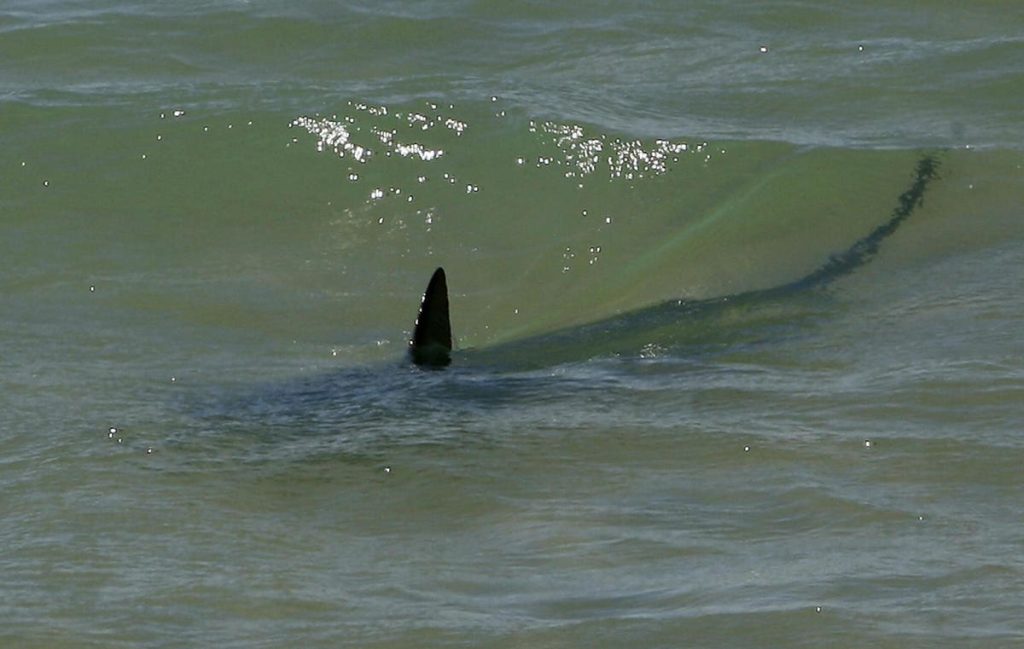New York’s coastline now not only has cleaner waters, but warmer ones. While it is an environmental win for some – who doesn’t love a more pristine environment? – it also has led to a bit of a problem.
Warmer and cleaner waters are a big draw for swimmers, surfers, and beachgoers. They’re also a big draw for some oceanic animals, and this combination has led to an increase in bait fish populations, drawing in larger predatory fish like sharks. A positive environmental indicator, but it poses challenges for us humans. To address this issue, safety officials at a New York beach are significantly increasing their use of drones to mitigate potential human-shark interactions.
Jones Beach, a sprawling state park stretching 10 kilometers along Long Island’s southern coast and attracting six million visitors annually, is the focal point of this drone-based monitoring initiative. Lifeguards and New York State Park Police officers employ this technology to keep a watchful eye on the waters near the shore. Whenever sharks or unusual sea life activity are detected, they can promptly alert swimmers to stay out of the water. Although the tracking program commenced in 2017, it has gained renewed importance following a series of shark bites at New York beaches during the 2023 Northern Hemisphere summer. While the risk of shark bites remains low, a 65-year-old woman was recently hospitalized after a shark bite at Rockaway Beach in Queens. Subsequently, lifeguards at Jones Beach temporarily closed the water three times due to possible shark sightings, two of which were spotted using drones.
Currently, the New York State Park Police manages a fleet of 19 drones stationed along Jones Beach. Lifeguards operate these technological gadgets with the support of officers who can provide enhanced monitoring through a mobile command center that travels along the beach whenever unusual activity is observed in the water. Inside the command center van, officers can access a live stream of drone footage on a TV screen, allowing them to see if there is a shark nearby and assess whether swimmers should be evacuated from the water.
While implementing the program incurs costs—around $9,200 per kit for the less advanced drones used by lifeguards, in addition to the need for operators trained in Federal Aviation Administration regulations—officials believe it is a worthwhile investment to protect beachgoers from potential hazards. “I can’t predict whether or not there’s going to be more bites or shark attacks, but what I can tell you is … the more drones that are flying in the air, there’s more of a chance of seeing these animals in their natural habitat,” Park Police Captain Rishi Basdeo told CNN last month, prior to the latest attack (which occurred at a different beach from where his team monitors). “Just by merely warning people, that in itself is [paying] dividends,” he said. And, he added, “It’s actually cheaper than calling in a police helicopter.”
According to Basdeo, an official involved in the program, the drones offer an exceptional real-time aerial view of water conditions. If a shark is detected within 120 meters of the shore, authorities immediately consider closing the water to ensure safety. “If a shark is in close proximity to the bathing area — or even before we get schools [of fish] there — we are already making that decision … and the lifeguards will stop people from swimming and just safely guide people out of the water.”
During a recent demonstration of the drone tracking program, the cameras primarily captured a few skate fish just off the shore. However, these drones, equipped with powerful cameras capable of seeing beneath the water’s surface from a high altitude, have previously recorded footage of sharks swimming alone and feeding on large schools of fish. The utility of this technology also extends far beyond shark tracking. These drones can be enhanced with infrared cameras, spotlights, and speakers, making them valuable assets for search and rescue operations. They are even capable of delivering a life preserver to a distressed swimmer faster than a lifeguard could reach them. “If we get a report that an individual is missing at night, we have an ability aside from calling in a police helicopter … we can send our drones up and put in the infrared capability in the camera and actually see in the dark,” Basdeo said. “Five years ago, we didn’t have this drone capability in our agency, but now it’s spreading and it’s catching on.” However, there are drawbacks to using the drones: “We’re on strict guidelines when we fly and operate these drones. It is not used to surveil the public. It is used to keep them safe. We don’t fly, or we try not to fly, over large groups of people.”
New York isn’t the only location using drones in shark monitoring programs. In Australia, for instance, New South Wales employs drones equipped with cameras and artificial intelligence to detect and alert authorities and beachgoers about shark presence. South Africa also utilizes drones for research and conservation purposes. In places like Southern California and Reunion Island, drones aid lifeguards in monitoring shark movements and enhancing beach safety, while some South American countries, like Brazil, have explored drone technology for shark monitoring and public protection along their coastlines. These programs serve various objectives, from public safety to scientific research and shark conservation, and continue to evolve to ensure coexistence with these apex predators while safeguarding beachgoers.
Read the full article here










